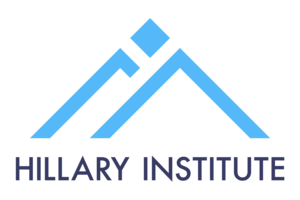High NZ rates will keep luring investors into kiwi
High NZ rates will keep luring investors into kiwi, fund manager says
By Paul McBeth
Nov. 28 (BusinessDesk) - New Zealand's relatively high interest rates will continue to lure global investors to the kiwi, creating headaches for local policy makers who, like the rest of the world, want a weaker currency to drive export growth, according to a Sydney-based fund manager.
The kiwi dollar has dropped about 11 percent against the greenback from a peak in July, recently trading at 78.44 US cents, but will continue to find favour as New Zealand interest rates remain higher than its peers, even though they're low in absolute terms, Goldman Sachs Asset Management managing director investment division Philip Moffitt said at an investors' lunch this week. New Zealand is one of several jurisdictions, including Australia, the US, peripheral Europe and Spain, that provide high quality and high yielding investment exposure.
"They're the high yielders in the world, and there's been very strong demand continuing in these markets, even though rates have come down," Moffitt said. "In a low inflation, low rate, low growth environment, the market continues to look for relatively high yields."
The yield on New Zealand's benchmark 10-year government bond was recently at 4.32 percent and Australia's equivalent was at 3.06 percent. That compares to the yield on US 10-year Treasuries of 2.21 percent, British 10-year bonds at 1.92 percent, European bonds at 0.7 percent and Japan's at 0.43 percent.
New Zealand's Reserve Bank embarked on tightening monetary policy earlier this year, hiking the official cash rate four times from a record low to the 3.5 percent rate it currently sits at, and governor Graeme Wheeler is now assessing the impact of higher rates. He delayed the hikes using macro-prudential tools to combat a heating housing market in October last year for fear of stoking demand for the kiwi dollar, and the bank has been active in currency markets to try and push the kiwi down.
Last month, Wheeler said the currency's strength was still "unjustified and unsustainable” and that the kiwi should go through "further significant depreciation" to limit the impact on the nation's tradable sector.
This week, Reserve Bank of Australia deputy governor Philip Lowe said Australia's currency, which recently traded at 85.07 US cents, was still too high and that a lower exchange rate would help the economy.
Moffitt, speaking at a lunch in Wellington hosted by the local unit of fund manager Nikko Asset Management, said both the trans-Tasman banks believe a better way to rebalance their economies is through a weaker currency. Recent declines in the trans-Tasman pair as investors push up the greenback in anticipation of higher US interest rates have not been enough, and central banks in Europe and Japan have indicated plans to expand the monetary base, which will drive down the euro and yen.
"Not everyone can have a weaker currency," Moffitt said.
(BusinessDesk)


 Federated Farmers: Government Ends War On Farming
Federated Farmers: Government Ends War On Farming University of Auckland: NZ Researchers Drive Work On International AI Framework
University of Auckland: NZ Researchers Drive Work On International AI Framework Woolworths: Rolling Out Team Safety Cameras To All Stores As Critical Tool For De-escalating Conflict
Woolworths: Rolling Out Team Safety Cameras To All Stores As Critical Tool For De-escalating Conflict  Consumer NZ: Environmentally Conscious Shoppers At Risk Of Being Greenwashed
Consumer NZ: Environmentally Conscious Shoppers At Risk Of Being Greenwashed Hugh Grant: Facing The Future - The Use Of Biometric Tech
Hugh Grant: Facing The Future - The Use Of Biometric Tech John Mazenier: Gaffer Tape And Glue Delivering New Zealand’s Mission Critical Services
John Mazenier: Gaffer Tape And Glue Delivering New Zealand’s Mission Critical Services



